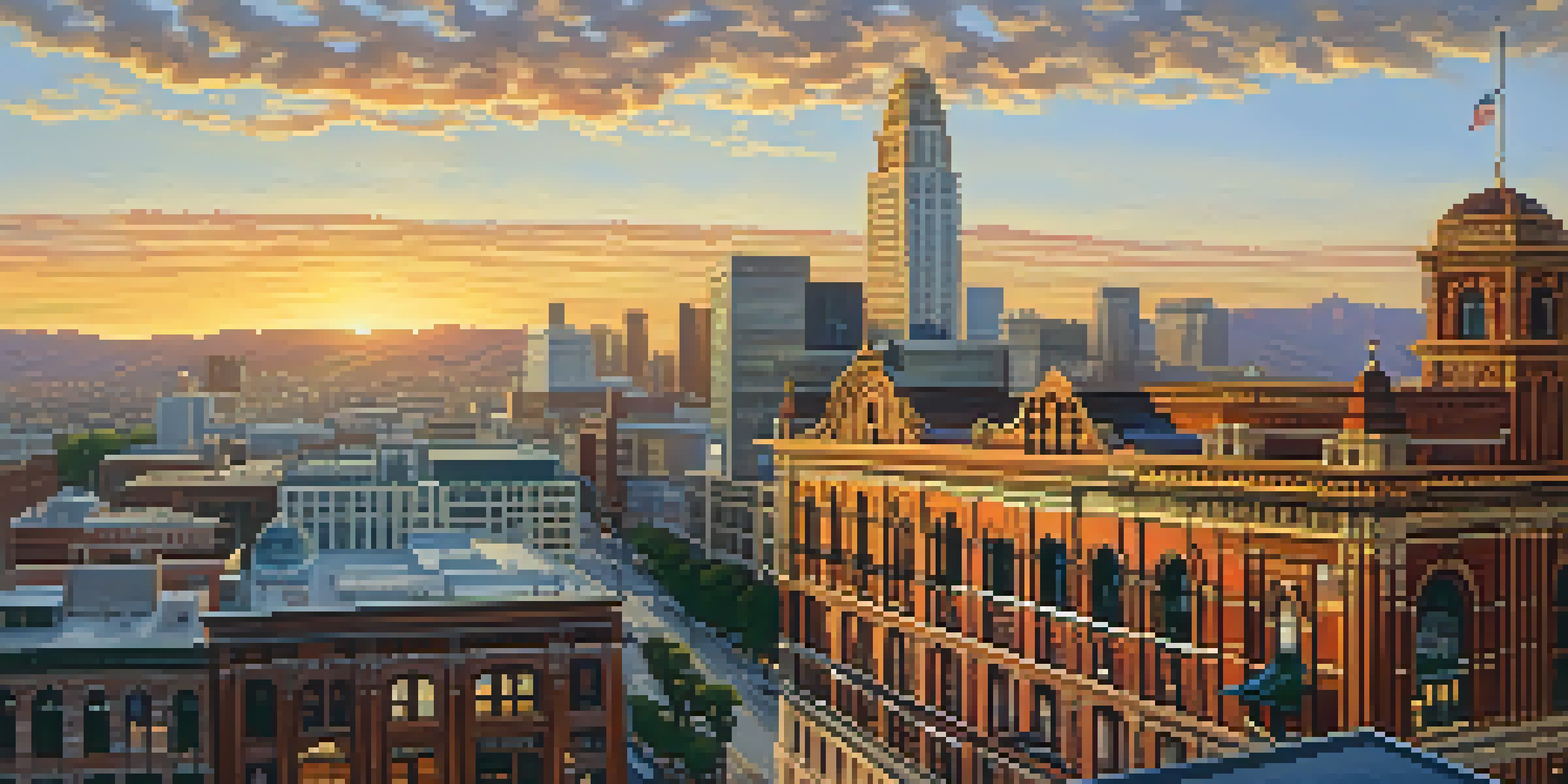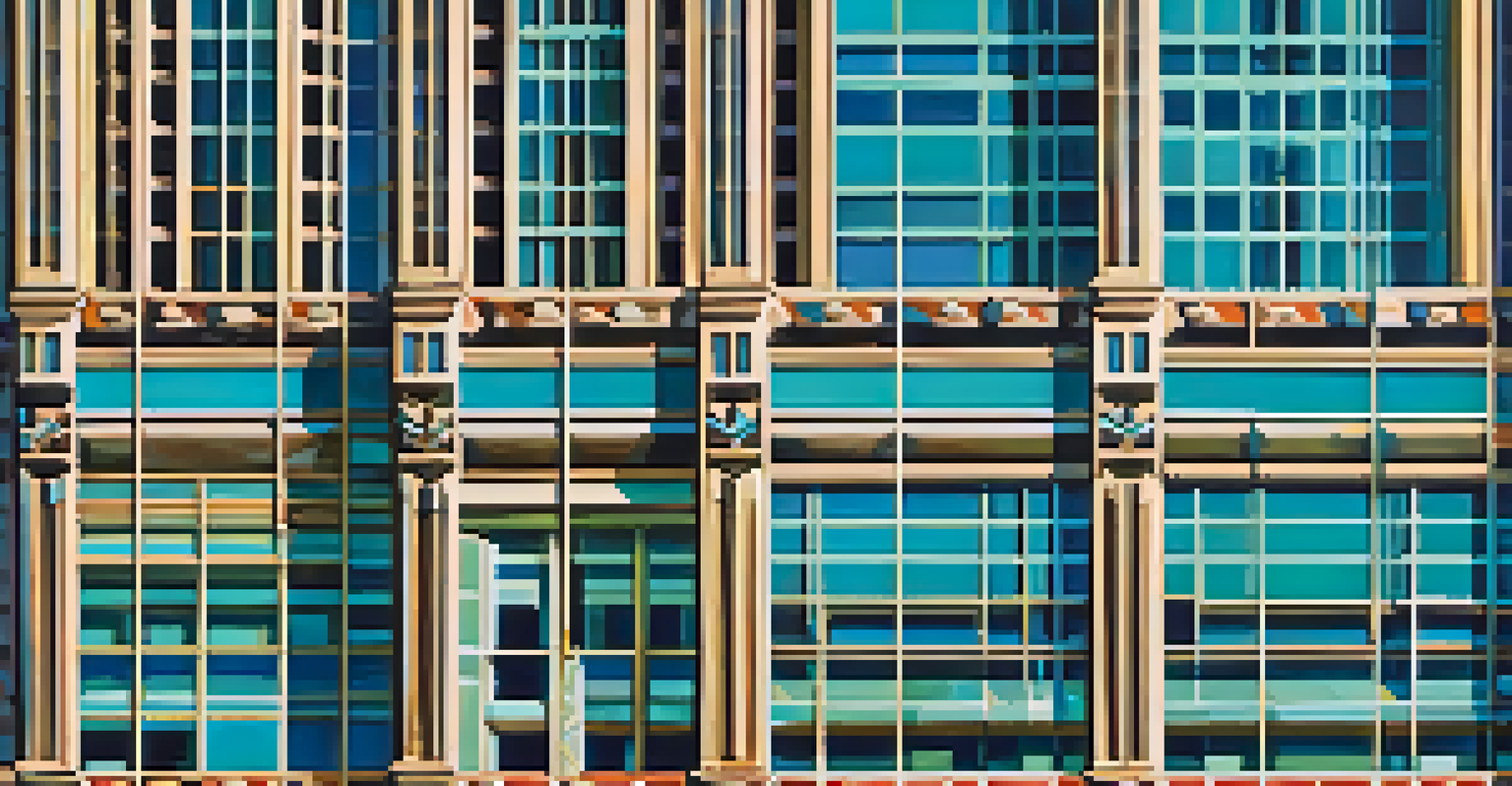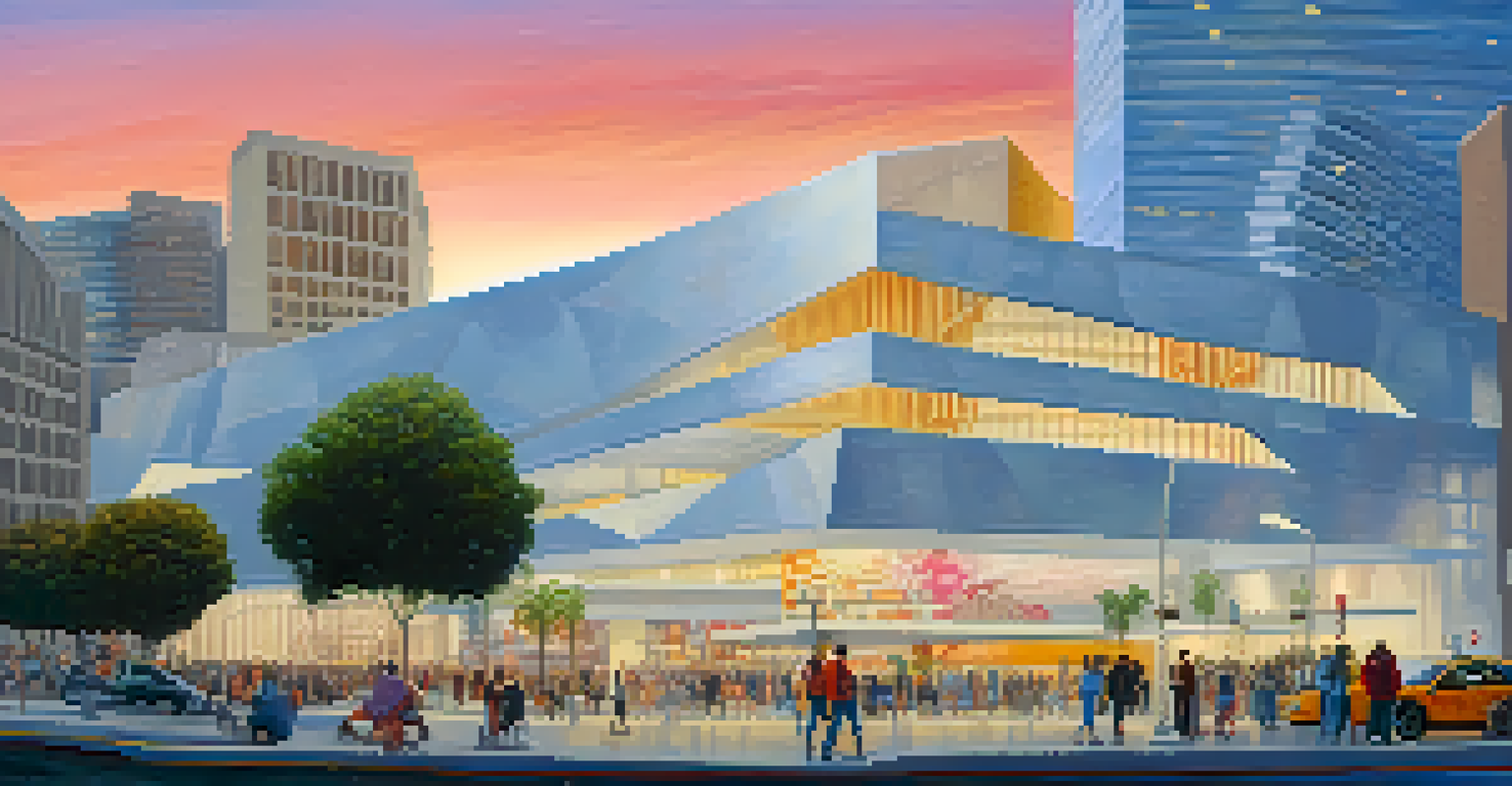The Eclectic Mix of Architectural Styles in Downtown LA

A Brief History of Downtown LA's Architecture
Downtown Los Angeles has a rich architectural history that reflects the city's growth. Originally influenced by Spanish Colonial Revival, the area quickly evolved with the influx of new cultural styles. By the early 20th century, iconic buildings began to rise, showcasing a blend of Art Deco, Beaux-Arts, and Modernist influences, setting the stage for a unique urban landscape.
Architecture is the learned game, correct and magnificent, of forms assembled in the light.
As the city expanded, various architectural movements left their mark, creating a melting pot of styles. This evolution resulted in a skyline that tells a story of innovation and adaptation. Each building, from historic landmarks to contemporary designs, contributes to the narrative of Los Angeles as a vibrant, ever-changing metropolis.
Today, when you stroll through Downtown LA, you're not just seeing buildings; you're witnessing the evolution of a city. The eclectic mix of architectural styles reflects the diverse cultures and histories that have shaped this urban space. It's a testament to how architecture can capture the essence of a community.
Iconic Skyscrapers: The Modern Face of LA
The skyline of Downtown LA is dominated by iconic skyscrapers that define its modern character. Structures like the US Bank Tower and the Wilshire Grand Center showcase cutting-edge design and engineering. Their glass facades and towering heights symbolize the city's ambition and growth.

These skyscrapers are not just functional spaces; they are landmarks that draw the eye and tell a tale of progress. The combination of sleek lines and innovative materials creates a striking contrast against the older, more historical buildings in the area. This architectural dialogue between the old and the new is what makes Downtown LA truly captivating.
Diverse Architectural Styles in LA
Downtown LA's architecture showcases a rich blend of styles, reflecting the city's cultural diversity and historical evolution.
Moreover, these high-rises often feature unique designs that reflect the city's cultural diversity. For example, the twisting form of the Wilshire Grand mimics the motion of a rising flame, paying homage to the spirit of Los Angeles. Each skyscraper contributes to the eclectic mix, making the skyline a canvas of creativity.
Historic Landmarks: A Glimpse into the Past
Amidst the modern skyscrapers, Downtown LA is home to numerous historic landmarks that provide a glimpse into the past. Buildings like the Bradbury Building and the Los Angeles Central Library showcase exquisite craftsmanship and architectural styles from decades gone by. They stand as reminders of the city's rich heritage.
We shape our buildings, and afterwards our buildings shape us.
The Bradbury Building, with its stunning ironwork and natural light-filled atrium, is a marvel of Victorian architecture. It has not only survived the test of time but continues to inspire awe in visitors and locals alike. Similarly, the Central Library's grand murals and unique design reflect the city's commitment to culture and education.
These historic sites are more than just structures; they are integral parts of the community's identity. They serve as cultural touchstones, reminding us of the stories and people that have shaped Los Angeles. As you explore Downtown, these landmarks invite you to appreciate the city's architectural legacy.
The Influence of Art Deco in Downtown LA
Art Deco is one of the standout architectural styles that flourished in Downtown LA during the early 20th century. Characterized by bold geometric shapes and ornate detailing, Art Deco buildings like the Eastern Columbia Building are vibrant examples of this era. They exude a sense of glamour and sophistication that still resonates today.
This style often features intricate motifs and colorful tiles that add visual interest to the urban landscape. The use of bright colors and streamlined forms reflects the optimism of the Roaring Twenties, making it a unique part of LA's architectural tapestry. It's a style that invites admiration and captures the imagination.
Iconic Skyscrapers Define the Skyline
Modern skyscrapers like the US Bank Tower and Wilshire Grand Center symbolize Los Angeles' ambition and innovative spirit.
Walking through Downtown LA, you can't help but notice the elegance of Art Deco structures. They stand in stark contrast to the sleek lines of modern buildings, creating a harmonious blend of styles. This rich architectural diversity allows visitors to appreciate the evolution of design throughout the decades.
Contemporary Designs: The New Wave of Architecture
In recent years, Downtown LA has embraced contemporary architecture, pushing the boundaries of design. Innovative buildings like The Broad Museum and the new Apple Store showcase creativity and a forward-thinking approach. These structures often incorporate sustainable materials and modern technologies, making them not only visually striking but also environmentally friendly.
Contemporary designs frequently challenge traditional architectural norms, using unconventional shapes and materials. For instance, The Broad’s honeycomb-like design creates a unique experience for visitors as they engage with art in an inspiring space. This fresh perspective on architecture adds to the eclectic mix that defines Downtown LA.
The rise of contemporary architecture reflects the dynamic spirit of the city, where innovation meets tradition. As new structures continue to emerge, they contribute to a continually evolving skyline. This blend of old and new showcases how Downtown LA remains at the forefront of architectural trends.
Cultural Influences Shaping Architectural Styles
The diverse cultural influences in Los Angeles play a significant role in shaping the architectural styles found in Downtown. From the Spanish Colonial Revival to Mid-Century Modernism, each style reflects the waves of immigrants and artists who have made their mark on the city. This rich cultural tapestry adds layers of meaning to the buildings we see today.
For example, the influence of Mexican culture is evident in the vibrant colors and decorative tiles that adorn many structures. Additionally, the Japanese American influence can be seen in the subtle elegance of gardens and courtyards integrated into the urban fabric. Each culture contributes its unique perspective, creating an architectural dialogue that enriches the city.
Historic Landmarks Reflect Heritage
Historic buildings such as the Bradbury Building and Central Library offer a glimpse into LA's architectural past and cultural identity.
This cultural exchange is not just about aesthetics; it fosters a sense of community and belonging. By embracing these diverse influences, Downtown LA celebrates its multicultural identity. As you walk through the streets, you can feel the pulse of a city that is continuously shaped by its people.
The Future of Downtown LA's Architectural Landscape
As we look to the future, Downtown LA's architectural landscape is poised for further transformation. With ongoing development projects and a focus on sustainability, the area is evolving into a more vibrant and livable urban space. Innovative designs that prioritize green spaces and community engagement are becoming increasingly important.
Projects like the LA River revitalization aim to enhance the natural beauty of the area while providing recreational opportunities for residents. This forward-thinking approach to architecture not only addresses the needs of the community but also emphasizes a commitment to environmental stewardship. It's an exciting time for Downtown LA.

The future of architecture in this city will likely continue to embrace a blend of styles, honoring its rich history while looking ahead. As new buildings rise, they will contribute to the eclectic mix that defines Downtown LA, ensuring that this vibrant city remains a place of inspiration and creativity for generations to come.